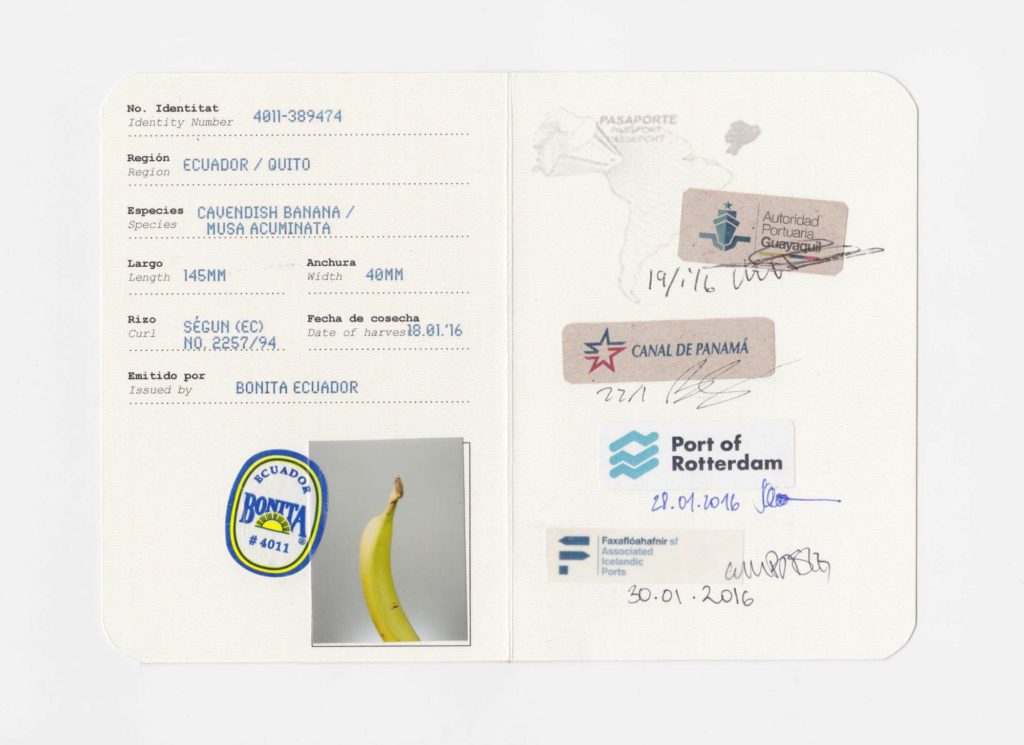Björn Steinar is an Icelandic designer who takes a closer look at all the waste we produce on a daily basis. From food waste to plastic, he explores ways we can do better. His most recent project, Catch of the day, is fighting food waste one vodka bottle at a time.
Food waste is a severe problem on a global scale with no solution in sight due to fluctuations in production and demand. Fermentation and distillation of leftover fruits prolong the “best before” date to infinity; since alcohol over 23% can never go bad. Each batch is carefully crafted using discarded fruits, picked up from local importers, farmers or dumpsters.
Björn will get us thinking about all the physical waste we are producing as part of the Web and what we can do about it!
Because…
We saw Catch of the Day during Design March and loved the concept. On of the threads we keep pulling at to see where it leads is this idea of waste.
What is digital waste? are there waste in transmission, in processing, in missed opportunities or transactions? There are people who deal with physical waste and turn it in to an asset. Back in 02017, OmNom chocolate spoke about how they used cacao husks, which were normally a waste product, to make something completely new.
We invited Björn to come and speak about some of his explorations of waste. From the efficiencies and inefficiencies of the global supply chain, to how much food is being wasted and the missed opportunities to turn something of low-value into a high-value, non-perishable product.
Waste ➞ Web
Björn comes from this new generation of product designers were everything you produce needs to be environmentally sustainable. He’s spent all his time on various projects which focus on just this. Reducing waste, recycling waste and reusing it.
He started his exploration of all of this with the simple banana. Bananas are not native to Iceland. This alien in our land had to have come from somewhere. So as a project he created a banana passport to trace from its origins in Equador to how it got to a local Icelandic supermarket. It turns out, during the trip, each banana is touched by 33 people.

How is this all possible? Shipping containers. Global shipping and transport was revolutionised by the invention and standardisation of the shipping container. (If you want a deep dive into the history, read Marc Levinson’s book, The Box: How the Shipping Container Made the World Smaller and the World Economy Bigger)
Rather than individual items being put onto a boat, they are pack neatly into a container, and that is then moved, shipped and distributed. Think about how this could impact the Web. We already send individual packets of information, which contains parts of some information. Maybe part of a message, an image, document or video. All those packets zoom around the world out-of-order and are recombined on your local device to re-create the original. What could we take away from containerisation? Or what could the analog world learn from the digital?
Iceland is unique in that we can’t sustain ourselves, but because of global shipping, we focus on fishing and aluminium. So much so, that we have fish on our currency instead of famous people or monarchs.
His next project was a “made-in-label” to trace the origins of one of Iceland’s most iconic products, a can of Applesin drink.
You are beginning to see a trend! Global interchange were certain regions specialise in specific tasks. Sounds like the Web to us! When put into context in the analog world, it is a seemingly horrible waste of resources to be sending things back and forth, but (for now) it seems to be the most cost effective. There is no way such a small economy like Icelands would support all the different steps needed to make an aluminium can. But then that begs the question: Do we need that can in the first place?
All these ideas and experiences lead to Björn’s project “Catch of the Day” which we all got to sample. While watching a documentary about ancient shipwrecks he noticed that the only two things still in perfect condition thousands of years later were honey and 23+% alcohol. That’s because at that level, there is no need for a best before date.
All this chasing of waste, he turned into a high-value, non-perishable product. In the end, it became a mutual agreement between the importers and grocers and him. They benefited two-fold, good will with the community and also reduced costs in waste removal. He benefited because the “spoiled” fruit was not coming from a dumpster, but from a clean source.
Turning waste into profit is a very exciting area when you can find it. We want to continue to explore this waste on the Web. What is it, where is it, and how could we (in a healthy, ethical way) turn that into a valuable resource.
You can view all the video recordings and subscribe to the Material podcast on the Material Archive site.